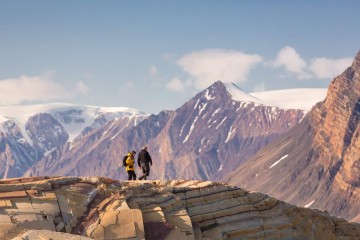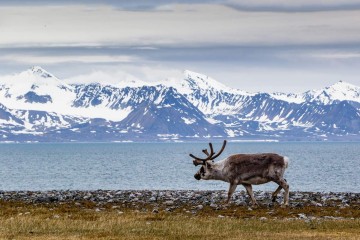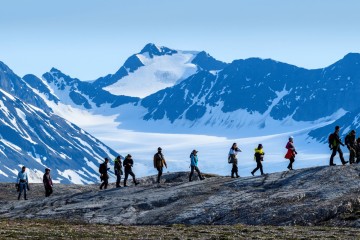Arctic Saga: Spitsbergen, the Faroes and Jan Mayen
Tour Overview
Arctic Saga: Exploring Spitsbergen via the Faroes and Jan Mayen allows you to venture to some of the most remote islands on Earth, on a 14 day expedition cruise.
Your journey will start by marveling at the spectacular landscapes of Spitsbergen, the largest island in the Svalbard archipelago. As your expedition takes you to the Faroe Islands, be captivated by a land of rugged mountains, plunging cliffs, and cascading waterfalls that tumble down into the Atlantic Ocean. The islands are a haven for seabirds, including puffins, guillemots, and kittiwakes, who nest on the towering sea stacks. Keep your eyes peeled for reindeer grazing across the remote tundra and seals basking along the shorelines.
Your journey also brings you to the mysterious Jan Mayen Island, a volcanic paradise where snow-capped peaks and stark, wild beauty dominate the horizon. The island’s volcanic origins are evident in the dramatic landscapes, and its isolation makes it a sanctuary for wildlife, including polar bears, Arctic foxes, and a variety of seabirds.
Throughout your expedition, you’ll experience intimate shore landings and thrilling zodiac cruises, guided by passionate experts who will share their deep knowledge of the Arctic’s history, wildlife, and culture. Hear tales of explorers who braved these frigid waters and learn about the resilient communities that have lived in the Arctic for generations.
Dare to witness the untamed beauty of the frozen north, where every moment feels like a discovery. The Arctic’s untold wonders are waiting—will you answer the call?
Please note the 2026 departure is 15 days
Viva's Best Bits...
Cruise in a Zodiac to explore diverse landscapes and iconic Arctic and north Atlantic wildlife, such as puffins, seabirds, polar bears, reindeer, and whales.
Follow in the footsteps of the Norsemen on Fair Isle and the Vikings in the Faroe Islands, plus explore the volcanic and glacier- covered Jan Mayen island, in the heart of the North Atlantic Ocean
Prepare to be amazed by an incredible environment featuring immense fjords, towering glaciers, soaring sea stacks and coastal cliffs teeming with seabirds by the thousands!




